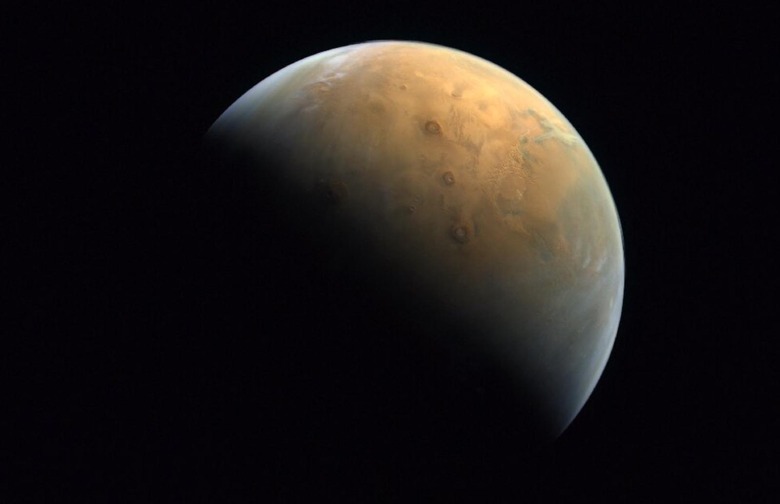China Nailed Its Mars Landing – Here's What Comes Next
NASA's Perseverance rover may be taking the lion's share of the science headlines this year but it's about to have some stiff competition. China, which launched its latest Mars mission at around the same time that NASA launched its new rover, successfully touched down with a lander and rover this past weekend. The mission is historic for the country, which has been trying to catch up to the likes of the U.S. and Russia in the new space race.
The mission launched from Earth before NASA's Perseverance mission and arrived at Mars at around the same time. However, instead of landing on the surface immediately, as Perseverance did, China chose to begin things with an orbiter before releasing a lander and rover to the surface. Now that the rover is, well, roving, we can expect to hear a lot more about the robot, called Zhurong, in the coming months.
The Zhurong rover isn't as well-equipped as NASA's Perseverance, but NASA's first Mars rover also wasn't anywhere near as complex as its newer models so that's totally understandable. The rover will explore the area where it landed and study the material that covers the surface. In concert with the orbiter and lander, the rover will examine interesting rock formations and carry out scientific efforts until it can no longer function.
Unlike NASA's Perseverance which is designed to last for years in the harsh Mars environment, Zhurong is only designed to last around three months. That's plenty of time to make some discoveries and give China's space agency a good idea of what it should send to the Red Planet in the future, but it's also possible that the rover will last a great deal longer than it is designed to.
NASA's Opportunity rover famously lasted over a decade on Mars despite an expected lifespan of less than a year. Zhurong would have to get pretty lucky to pull something like that off, but assuming China's engineers are on top of their game, it's likely that we'll be hearing about Zhurong for a lot longer than just the next 90 days.
As significant as this rover mission is, it's really just one step toward China's larger plan. The country desperately wants to be a major player in what is often referred to as the "new space race," with countries like the U.S., Russia, and groups like the EU working on the technologies to send humans to Mars.
At this point, it's impossible to know who is in the "lead" in that race, especially when so much remains unknown about the potential risks of sending humans such a huge distance. The earliest crewed Mars missions will likely be orbital only, meaning they won't actually land on Mars, but even those missions pose extreme risks for the crew. We'll have to see how things pan out, but with China now exploring Mars remotely, it's clear that the country is a major force in space exploration.
